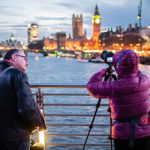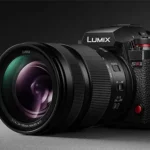In this video tutorial we are shown how to make an HDR timelapse video using the Dynamic Perception Stage Zero Dolly alongside the MX2 DollyShield engine. The maker of this film prefers the Pentax K7 because of its unique ability to auto-bracket 5 shots with two EV spacings, which equates to ten additional stops. Of course, this dolly system will perform nicely with different brands of DSLRs, including the Canon 5D Mark II, which this film was recorded on using a similar setup:
Regardless of the camera you are shooting with, always set your camera to manual mode and be sure to switch your lens to manual focus if you haven’t already. After attaching your camera to the dolly setup, focus your lens and set your aperture to around an f/11 to give the scene nice depth of field. Use a light meter or take a few sample shots to determine the most appropriate exposure speed. Next you’ll want to set up the auto-bracketing on your camera. This will vary between camera brands, but on the K7 used in this video, you simply access the bracketing screen via the menu. Rotate the back dial to adjust the amount of stops between each frame and the front dial lets you choose how many shots you will be taking each time.
Next, we learn what settings to put the MX2 DollyShield engine on for optimal results. The engine used in the video is an early prototype so it’s missing a casing, but the display and button is same as the marketed version. Jay does a wonderful job delivering in depth instructions in the video including some interesting explanations. Here’s a run down of the key points. For the sake of this tutorial, we’ll be working solely on Axis 1, so it’s safe to assume all the steps in the following list are applied there:
- Take a test shot and measure the amount of time your camera takes to run through the entire bracketing sequence. For the K7, it takes about 3 seconds for the camera to run through all five frames. Add about half a second to that to make sure the dolly doesn’t start moving before the sequence is over.
- The MX2 allows you to ramp the speed in which the camera moves by counting shots. For example, to make the timelapse featured in the film, the first and last 100 shots are taken at a slower speed than the middle frames. To do this find the Ramp option on the menu, and input the amount of shots you want to take during the speed up and slow down phase of the ramping – again, in this case it’s 100.
- Find the menu option called Fixed SMS (Fixed Shoot-Move-Shoot), and turn it on. This will trigger the dolly to shoot a sequence, move the camera, shoot the next sequence, and so forth.
- Head over to the Camera menu option and choose Max Shots, enter the total amount of shots you want to take. 360 were used here, but this will vary between projects.
- You’ll have to decide how many inches you want the camera to move between shots. When you have that figured out, go back to the main screen and move the cursor down to the second line to enter that distance. 0.2 inches will do for this filmmaker.
- Lastly, enter the duration you wish the timelapse to occur over. Still on the main screen, enter the time on the top line. The MX2 works in seconds, so if you want your film to record over a span of hours your number may be into the thousands.
While the tutorial in this video gives users a good start in making timelapse films, there are other features that aren’t touched on in the tutorial. It may be worthwhile to look through all the menu options before getting started to familiarize yourself with the system.
For Further Training on Timelapse Photography
Check out this new COMPLETE guide (146 pages) to shooting, processing and rendering time-lapses using a dslr camera. It can be found here: Time-lapse Photography Guide
Like This Article?
Don't Miss The Next One!
Join over 100,000 photographers of all experience levels who receive our free photography tips and articles to stay current:






Another suggestion would be to shoot single RAW pictures and tone-mapping them in Photomatix Pro. This will give a similar effect without the need to stack so many brackets.
For this type of exercise do you shoot RAW or JPEG? I can imaging the time factor if RAW is used.